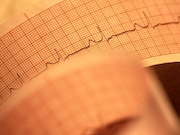Clinical benefit of model was superior to current consensus-based ICD placement algorithm
WEDNESDAY, April 3, 2019 (HealthDay News) — A new model can predict the risk for incident ventricular arrhythmias (VAs) in patients with arrhythmogenic right ventricular dysplasia/cardiomyopathy (ARVC), according to a study published online March 27 in the European Heart Journal.
Julia Cadrin-Tourigny, M.D., from Johns Hopkins Hospital in Baltimore, and colleagues enrolled 528 patients with a definite diagnosis of ARVC and no history of sustained VA/sudden cardiac death (SCD) at baseline from five registries in North America and Europe.
The researchers found that 27.7 percent of patients experienced sustained VA, defined as SCD, aborted SCD, sustained ventricular tachycardia, or appropriate implantable cardioverter-defibrillator (ICD) therapy, during 4.83 years of follow-up. A prediction model was developed to estimate VA risk; eight potential predictors were included. All predictors except left ventricular ejection fraction were retained in the final model. Patients with and without events could be distinguished accurately by the model, with an optimism-corrected C-index of 0.77 and minimal overoptimism (calibration slope of 0.93). The clinical benefit of the model was superior to a current consensus-based ICD placement algorithm with a 20.6 percent reduction in ICD placements; the proportion of protected patients remained the same.
“This model, based on readily available clinical parameters, performs better than the current consensus guideline and has the potential to set the standard for prophylactic ICD placement in ARVC,” the authors write.
Several authors disclosed financial ties to the pharmaceutical and medical device industries.
Copyright © 2019 HealthDay. All rights reserved.








